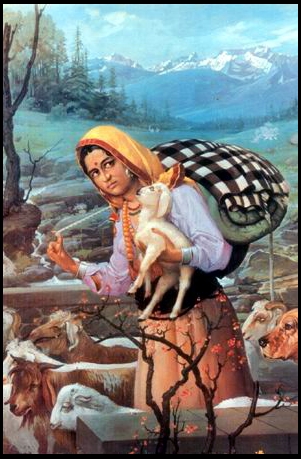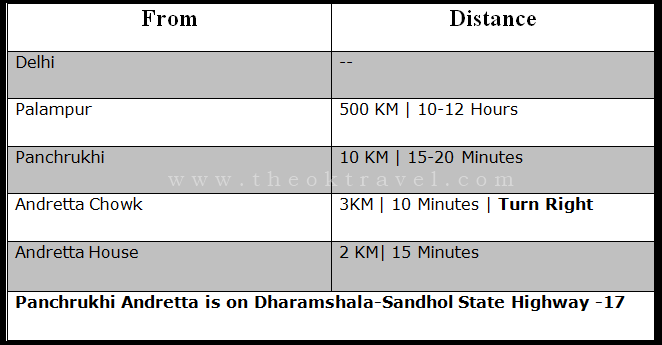The iconic Sohni-Mahiwal painting immortalizing the sublime emotion of love put Sardar Sobha Singh among the gallery of masters who, attracted to the land of snows, settled in Himachal to paint timeless pieces of art. Among serene environs, the Anderrata home in Kangra valley where the artist in his lifetime had withdrawn to give vent to his creativity has been converted into an art gallery where many of great artist’s original paintings have been housed. Honored for his paintings with a Padam Shri, many portraits of Sikh gurus by the master artist adorn the walls of famous Gurudwaras across the country.
From a humble background, to have distinguished himself as an artist of his time, Sobha Singh’s story is of having found the correct medium to give expression. Born in 1901 Sobha Singh was youngest of the four children of Deva Singh and Anchara Devi. Childhood images of theBeasRiverflowing beside his nativevillageofShiri Hargobindpurin Gurdaspur district left a lasting impression on him. The river was to appear a recurring theme in his works. Losing his mother at the tender age of 5 and his father at 16 pushed the young Sobha into a life full of hardships.

A childhood injury left him lame. Dislike for school cut short formal education which he quit after class five but the cravings of inherent artistic talent seduced him to take up a diploma in art and craft at a commercial education school in Amritsar. The qualification did not fetch Sobha Singh a job of any worth and he took up a map drawing apprenticeship with his brother-in-law, who was an overseer with the colonial authorities. On turning eighteen in 1919, the budding cartographer recruited into the British armed forces and as a draughtsman was posted out to Baghdad in far away Iraq.
Noticed for the fine layouts and the portraits he painted in his spare time, the British army officers would often get the talented Sobha Singh to make their portraits – which he obligingly would.The artist in conflict with his foreign environs ended a promising career in the occupying forces. Just four years later in 1923, Sobha Singh resigned from the army, returned to Amritsar, married Inder Kaur, opened up ‘Subash Studio’ and dedicated the rest of his life to the canvas, brush and paint. He went on to open studios at Anarkali Bazar – Lahore, Connaught Circus – Delhi and after brief stopovers first at Pragtinagar then at Shimla, by 1946 Sobha Singh was back in Lahore. During this phase he did assignments for Indian Railways, the Post and Telegraph department and other government agencies. As fame of him as a portrait artist grew, many Rajas, Maharajas and their consorts flocked to have their portraits made at his studio.
At Lahore he also made a foray into films and worked as an art director on some projects. Independence in 1947, followed by the partition riots and violence that displaced hundreds of thousands people caught up with the artist in Lahore, where his house and studio with over 300 pieces of art works were burnt down. Disillusioned with the turn of history and after trying his hand at odd jobs as a refugee for sustenance, the artist withdrew from urban centers. Attracted to the mighty grace of Dhauladhar ranges, the hurt psyche of the sensitive artist found solace in serener environs of rural Andretta in Kangra valley.
Irish playwright Norah Richards who had adopted the village for a home, helped the great master to settle in Andretta. About three centuries earlier – artists rendered jobless by the Mughal court in Delhi, for it stopped patronizing them had sought refuge at the various courts of Kangra royal houses. The fusion with local motifs crystallized into the world famous Kangra School of miniature paintings. Sobha Singh’s paintings too show strong influences of Kangra School of painting, especially in the use of colours and shades. It was at Andretta where Sobha Singh’s creativity flourished and art masterpieces like ‘Sohni-Mahiwal’, ‘Heer Ranjha’, ‘Mirza-Shahiba ‘Her Grace The Gaddan’, ‘Omar Khayyam’ and the ‘Kangra Bride’ were born.
Other than these works freezing the vitality of youth on canvas, it was the series of hallowed portraits of Sikh Guru’s particularly the meditative portrayal of Guru Nanak which made the master artist a household name throughout the Sikh religious community. Snapshots of Sikh history related to periods of Guru Arjun Dev, Guru Teg Bhadur, Guru Hargobind and the warrior Guru Gobind Singh painted under his master brush are a prized collection today. Not confining to the belief of one religion, he also painted portraits of Lord Ram, Krishna, Jesus Christ, Sheik Farid and others. The Punjab government declared Sobha Singh a state artist in 1974, Punjabi university conferred an honorary PhD in 1945 and he was awarded the Padam Shri by the President of India in 1983. Not resting with the laurels that came late in his life, the artist continued to work literally till the last.
An unfinished portrait of Ravi Dass, still on display at the Andretta gallery-cum-museum, was the last work when the brush fell out of the Sobha Singh hands. He fell ill and never recovered. His death in August 1986 was mourned by writers, poets, painters, dancers across the land. True to his conscience and the colors that he breathed life into have today made his art works a collector’s prize.

How to Reach?
Andretta Art Gallery is in Kangra District near Baijnath and Palampur, two of the most popular travel destinations of the state. It is near the village Panchrukhi, which lies close to the famous Ashapuri Temple of Kangra. It is believed that Ashapuri Temple and Baijnath Temple were built in the same era.
The Bir Billing Paragliding site is close to the Art Gallery. Read How to Reach at Bir Billing Site

SIR I WANT TRAINING OF QUATER PLATES AND SYNERY ON TILE ,PSE SEND ME TRAINING PROGRAMME AND ITS FEES.